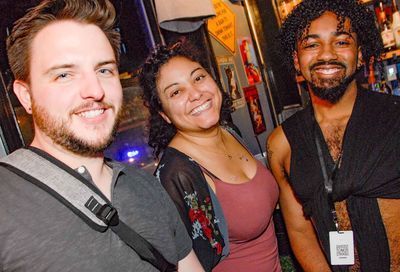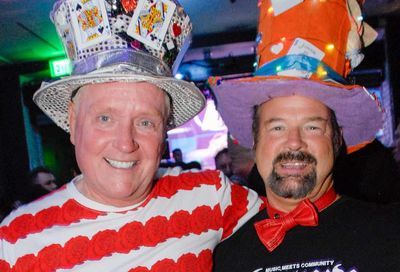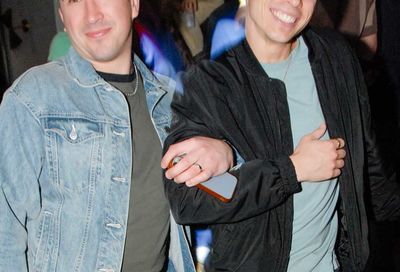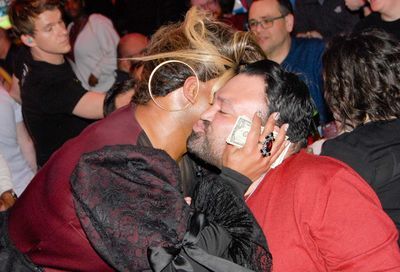Swept Away
'Clay's Way' is stirring portrait of youth in paradise
Aloha, little brahs!
Hawaiian coming of age
brightens a beach afternoon
Okay, okay, so I’m not a poet. But I do know good writing when I see it, and Blair Mastbaum’s little novel — tart, aggressive, and oddly sweet — is extremely well written. Mastbaum has an original, unapologetic style, and the story of Sam and Clay is a remarkably good read, despite the prevalence of bad teenage haiku.
Clay’s Way takes place just as Sam is turning sixteen. He lives in a place many would call paradise, described as “blue sky, fluffy clouds, golden sunlight, a soft breeze, exotic birds chirping, and the scent of plumeria flowers in the air — another fucking beautiful day on Oahu. ” An angry, unhappy kid, obsessed with being different, Sam puts more energy into dyeing his hair a variety of Krazy Kolorz than into dealing with his life. In fact, Sam’s determination not to deal with himself is what gives this novel its name. Sam is obsessed with an older boy named Clay.
 Quality writing: Mastbaum |
Good fiction has to take you somewhere you haven’t been, and Clay’s Way accomplishes this act in the most unlikely of places. Suburban Hawaii may consist of seemingly familiar neighborhoods, but the banyan trees and the “sharp green ” Koolau mountain ridge identify this landscape as somewhere largely unexplored. Sam is a useless and suspect haole (white person) amid the Hawaiians that dominate the surf and skate culture he emulates. The object of Sam’s affection, Clay, is a cool, older surfer (all of 18) of Portuguese descent. Sam envies Clay’s place in the “real ” Hawaiian world — a dark-complexioned and black haired popular boy, seemingly all-powerful and all-cool.
Sam describes Clay: “He’s tan and has black buzz-cut hair. The veins in his forearms stick out, like he’s just been surfing or something. His red T-shirt fits perfectly. He’s skinny, but with muscles, like the perfect amount — not from working out, but from surfing. They’re real muscles, not decoration. ” Sam’s worshipful narration continues, as Clay includes him in a quick trip behind the surf shop to smoke some pot. “He grew up to be a real ripped little Portugee boy. ” And the obvious. “I can’t take my eyes off him. ”
Dead-on descriptions evoke everything from surf shorts and Hawaiian t-shirts to a character’s mother as jade jewelry, a muumuu, and swinging hair — “She’s a hippie and she looks naturally happy, over a layer of like, ‘I’ve seen it all.’ ” Perfect. She fits, whole and recognizable among the smell of cigarette butts and keg beer soaking into grass and muddy ground, of boys’ unwashed t-shirts and salty skin, of surf posters over salvation army couches and homes with macramé plant holders woven of thick orange and brown yarn.
 Clay’s Way |
The sex scenes benefit from the quality of writing as well. Every time Sam becomes excited or aroused (he masturbates a lot), the rumbling combination of elation, terror, and power feels intensely real. Sam and Clay manage to have sex a few times throughout the book, but it is Sam’s anticipation — a bong hit passed from lips to lips, fingers on a sleeping boy’s tan, taut stomach — that is the most thrillingly told.
Without giving too much away, I can safely reveal that this relationship, between an unhappy, unbalanced sixteen-year-old and the closeted, masculine and drug-wrapped object of his affection is not without its ups and downs. Mastbaum actually positions Sam literally upside down numerous times throughout the book — it’s very effectively done.
The end, when it arrives, does so in a series of slowly lessening arcs, like waves washing a moonlit shore. Sam is not a transformed boy, and his ultimate actions are impossible to foretell. There is a real sense of dread as the pages dwindle. You care about Sam, and hope for Sam, and have no idea whether he’ll be all right. The novel’s final note — clean, moving, unexpected — almost lives up to the promise of what’s come before.
Support Metro Weekly’s Journalism
These are challenging times for news organizations. And yet it’s crucial we stay active and provide vital resources and information to both our local readers and the world. So won’t you please take a moment and consider supporting Metro Weekly with a membership? For as little as $5 a month, you can help ensure Metro Weekly magazine and MetroWeekly.com remain free, viable resources as we provide the best, most diverse, culturally-resonant LGBTQ coverage in both the D.C. region and around the world. Memberships come with exclusive perks and discounts, your own personal digital delivery of each week’s magazine (and an archive), access to our Member's Lounge when it launches this fall, and exclusive members-only items like Metro Weekly Membership Mugs and Tote Bags! Check out all our membership levels here and please join us today!



















